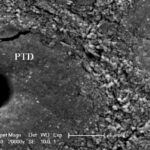
Dentine hypersensitivity is a common problem with a reported prevalence that ranges from 1.3% to 92%. It arises from exposed dentine following a thermal, tactile osmotic chemical or evaporative stimulus that is not linked to any other dental problem. Lasers are thought to act by melting and recrystallizing and closing the dentine tubules or causing physiological changes in the nerve fibres inside the dentine tubules.
The aim of this review was to compare the effectiveness of lasers and topical desensitising agent treatments for dentine hypersensitivity.
Methods
Searches were conducted in the PubMed, Cochrane Central Register of Controlled Trials (CENTRAL), EMBASE and ISI Web of Knowledge databases with no language restrictions. Randomised controlled trials (RCTs) or controlled clinical trials (CCTs) were considered. Two reviewers screened the studies and extracted the relevant data. Study quality was assessed using the Cochrane risk of bias tool. Treatment effects were calculated using pooled standardised mean differences (SMD) in visual analogue scale (VAS) changes along with associated 95% confidence intervals (95% CIs).
Results
- 13 studies (8 split mouth studies, 5 parallel design) were included.
- Topical desensitising agents included, fluorides, dentine bonding agents, potassium oxalate, Gluma, arginine.
- 4 studies were considered to be at low risk of bias,6 at moderate risk and 3 at high risk.
- Meta-analyses were conducted for both Nd:YAG and diode lasers at different time points see tables below.
| Follow up | No of studies | Nd:YAG laser v topical desensitising agents: SMD (95%CI) |
| Immediate | 5 | 0.47 ( −0.04 to 0.97) |
| 1 week | 5 | 0.34 ( −0.06 to 0.73) |
| 1 month | 5 | 0.34 ( −0.31 to 0.99) |
| 3 months | 4 | 0.68 (−0.30 to 1.67) |
| 6 months | 3 | −0.12 (−0.39 to 0.15) |
| Follow up | No of studies | Diode laser v topical desensitising agents: SMD (95%CI) |
| Immediate | 4 | −0.13 (−0.40 to 0.14) |
| 1 week | 4 | 0.45 (−0.27 to 1.16) |
| 1 month | 4 | 0.09 (−0.35 to 0.52) |
| 3 months | 3 | 0.27 (−0.23 to 0.77) |
| 6 months | 1 | 1.11 (0.72 to 1.50) * |
*Statistically significant
Conclusions
The authors concluded: –
We found low-quality evidence that was insufficient to draw any conclusions regarding the superiority of lasers or conventional topical desensitising agents in the treatment of DH. Further well-designed RCTs on this topic are needed to draw definitive conclusions.
Comments
We looked at another review of this topic last year (Dental Elf – 23rd Oct 2019) which included review included 11 RCTs. This new review includes 13 studies although only 4 studies are common to both reviews. The earlier review suggested that Er,Cr:YSGG may be the best laser for dentine hypersensitivity. However, both reviews suffer from a lack of high-quality studies with none of the studies being considered to be at low risk of bias in this review and only one being considered to be a low risk of bias in the earlier review.
A broader review of dentine hypersensitivity treatments (Dental Elf – 19th Sep 2019) identified 24 different agents which had been tested for treating dentine hypersensitivity with the commonest being sodium fluoride, hydroxyapatite and laser. The reviewers concluded that all active agents reduced dentine hypersensitivity at differing follow-up times. Well-designed, conducted and reported studies are needed to identify the best treatments for dentine hypersensitivity. Common outcomes standards would also assist in comparing the wide range of candidate treatment.
Links
Primary Paper
Zhou K, Liu Q, Yu X, Zeng X. Laser therapy versus topical desensitising agents in the management of dentine hypersensitivity: A meta-analysis [published online ahead of print, 2020 Feb 21]. Oral Dis. 2020;10.1111/odi.13309. doi:10.1111/odi.13309
Other references
Dental Elf – 23rd Oct 2019
Dental Elf – 19th Sep 2019
Dental Elf – Hypersensitivity blogs
Picture Credits
By Pinkmanggis – Own work, CC BY-SA 4.0, Link
